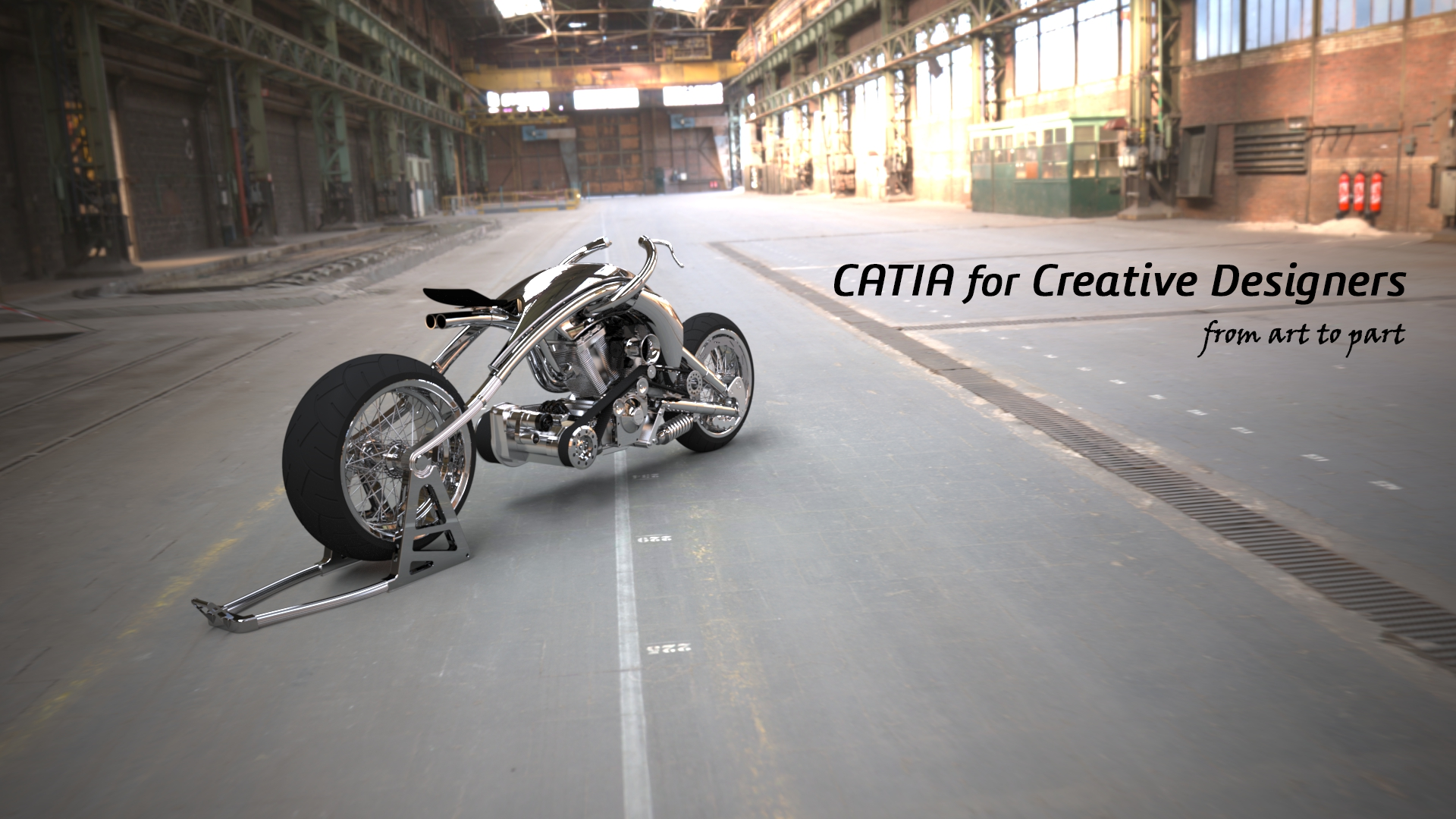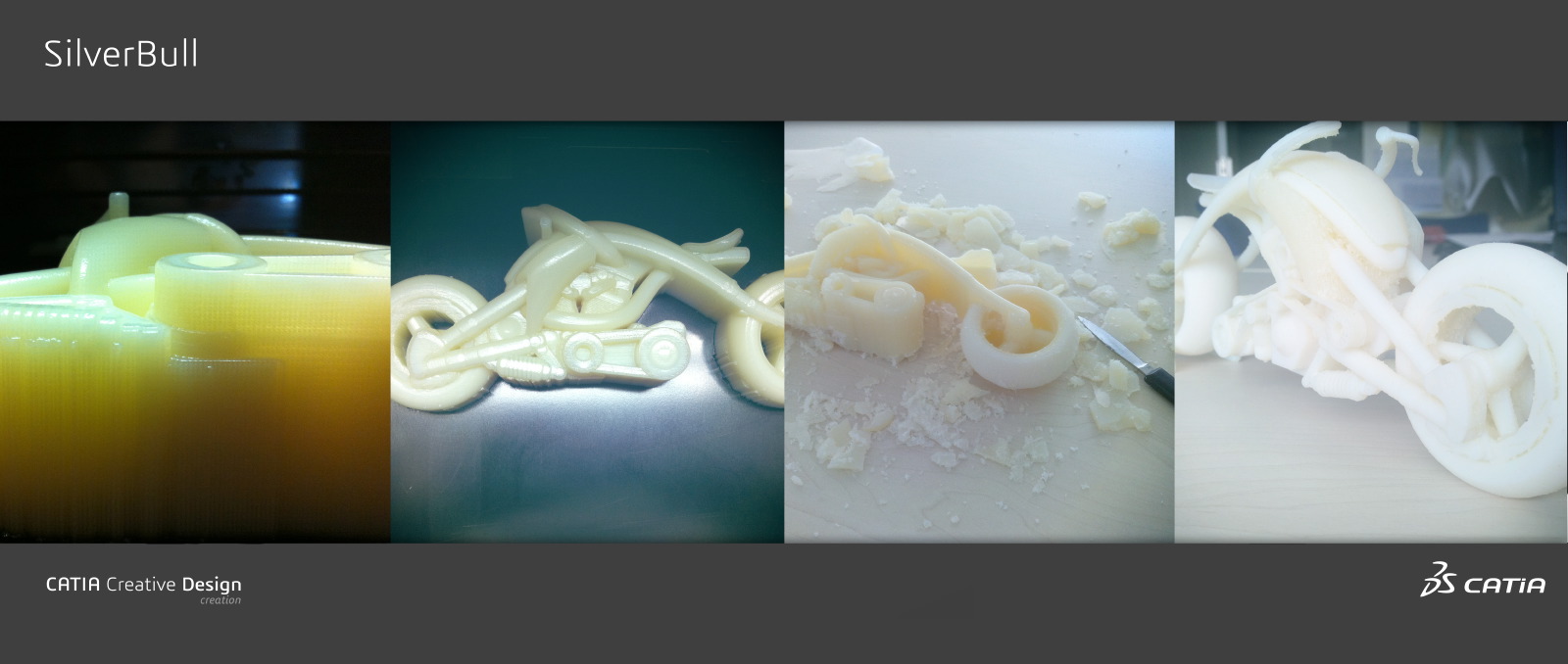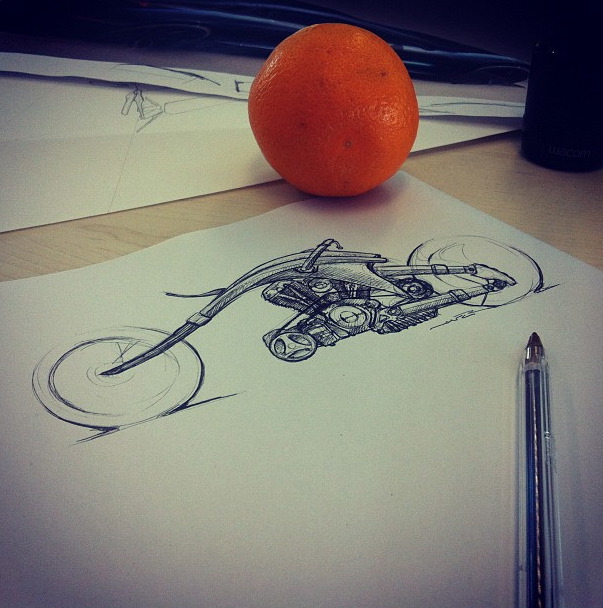


Dassault Systèmes' latest CATIA has helped a French industrial designer to realize his concept bike, SilverBull.
Strate Collège graduate Marc Boulangé set out to create a concept that would integrate both engineering and design into a finished product that would showcase the qualities of both disciplines.



Boulangé calls his vision of design ‘Mechanical Poetry', and has described how it is thanks to CATIA technology that his cherished SilverBull project came to creation.
Boulangé started out on the journey by first sketching a number of designs, not stopping until he was completely satisfied with its attitude, proportions and feel. He wanted to create a bike concept where its movements could be visible, with no hidden or complex mechanisms so that anyone looking at the bike could understand how it works.
"I started all of it from the engine which is the shiniest symbol of functional mechanics. Drawings on paper, then scanning, then adding textures to the surfaces. Using CATIA I could easily extrude volumes afterwards," he explains.
"After that, I did a model for the gearbox, then two wheels. I tried different tire widths, different spoke wheels, brake disks, and finally the handlebar. All I had left to do was to shade lights on these elements through the design of the bike frame, the saddle and minimalist fairings using CATIA."
Boulange says that this way the major turning point for him - having one piece of software hosting both styling possibilities with mechanical functionalities.
He moved on to developing his sketch in a 3D space using CATIA Natural Sketch, defining the key elements that would make up SilverBull. When these were established he could then transform and evolve the design, adding volume, fading edges and making it thinner.
Boulangé then entered the rendering stage, using shadows and reflections to see how SilverBull would appear when it realized. In this stage he also made his decision on what he would use for the color and trim after seeing how it would react to the light.
Finally, it was time for 3D printing. Working on the physical model can be a time-consuming and frustrating experience, but using rapid prototyping is becoming an increasingly important stage in the design process, as it is an effective way to produce high-quality objects complete with details and moving parts from 3D models in a matter of minutes.
"One day I received an email from CATIA Creative Designer Pierre Maheut, offering me the chance to test CATIA Version 6 using my SilverBull 3D model. The bike was noticed at a time Dassault Systèmes was organizing a ‘CATIA Visualisation Contest' on a very well known social network. I then met him and got to test the CATIA V6. That was an amazing experience," he says.
The machine that was used to create SilverBull is from Objet (Connex 260) and reaches a definition of 16 microns between two layers of material. The Objet's 3D printing system utilizes polymer-jetting technology much like an ink printer to print directly into 3D.
"Here I am, the naïve boy who thought both of them were simply trying to design something that works, works aesthetically, and has a nice story around it," Boulangé explains.






































